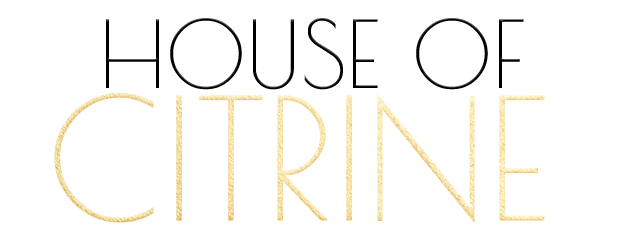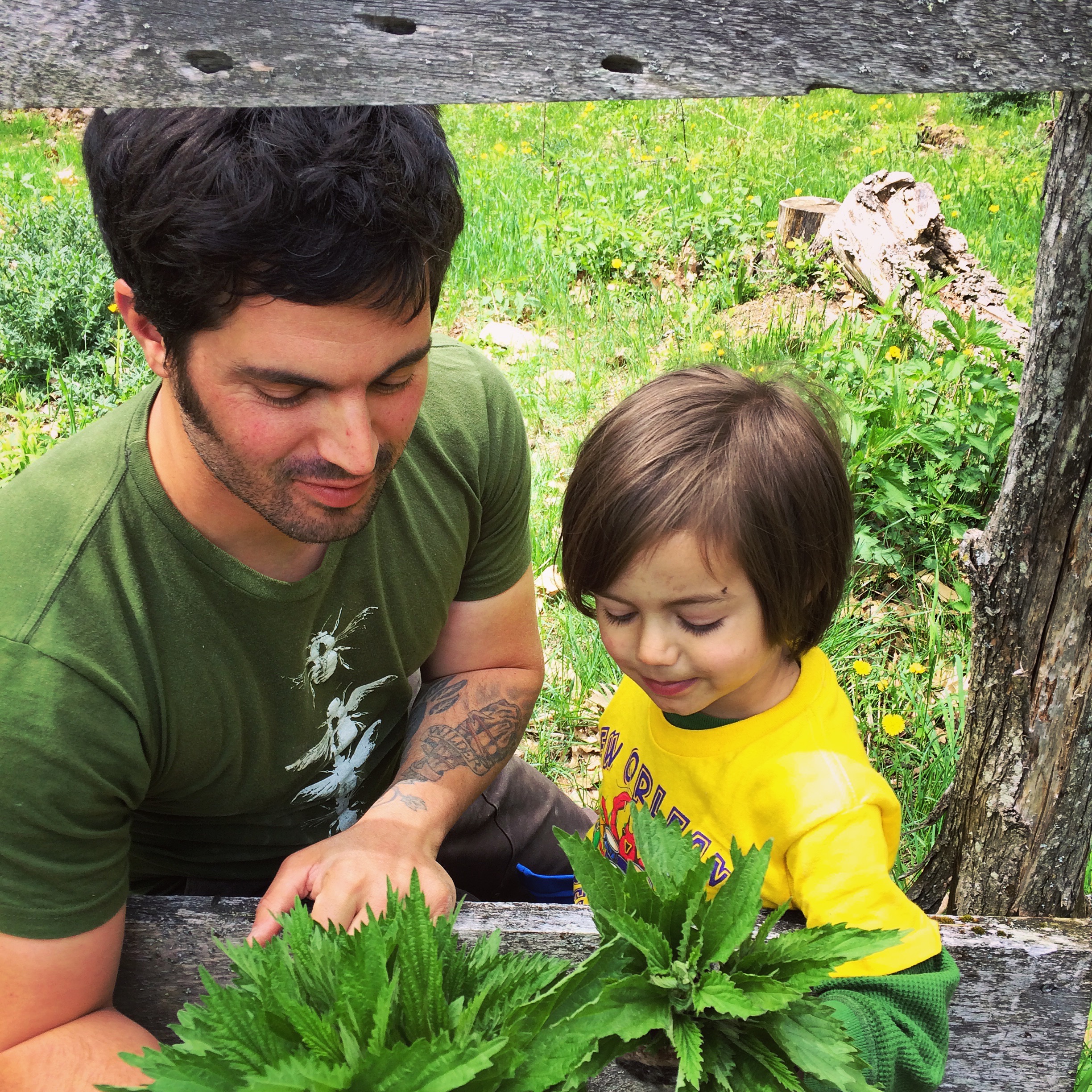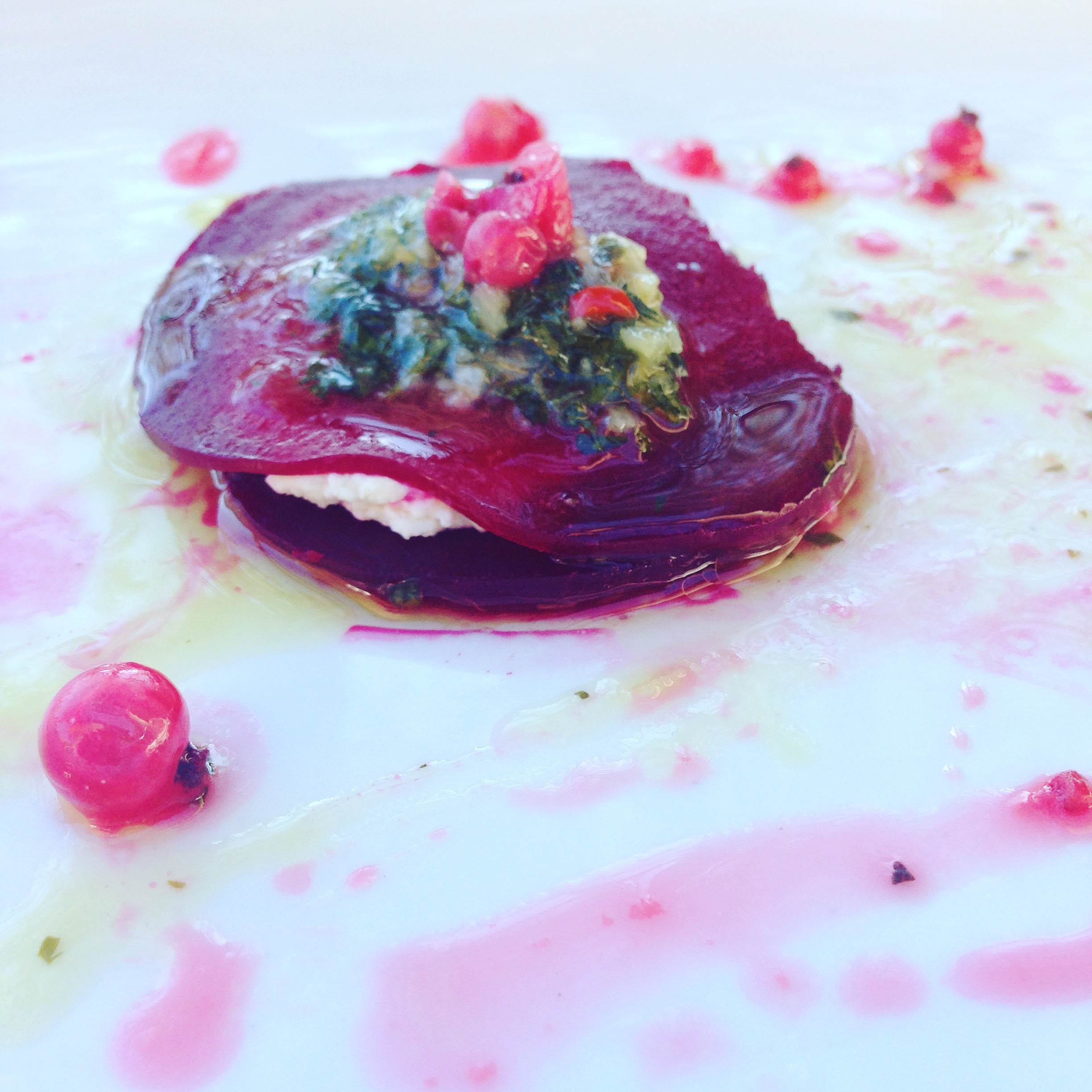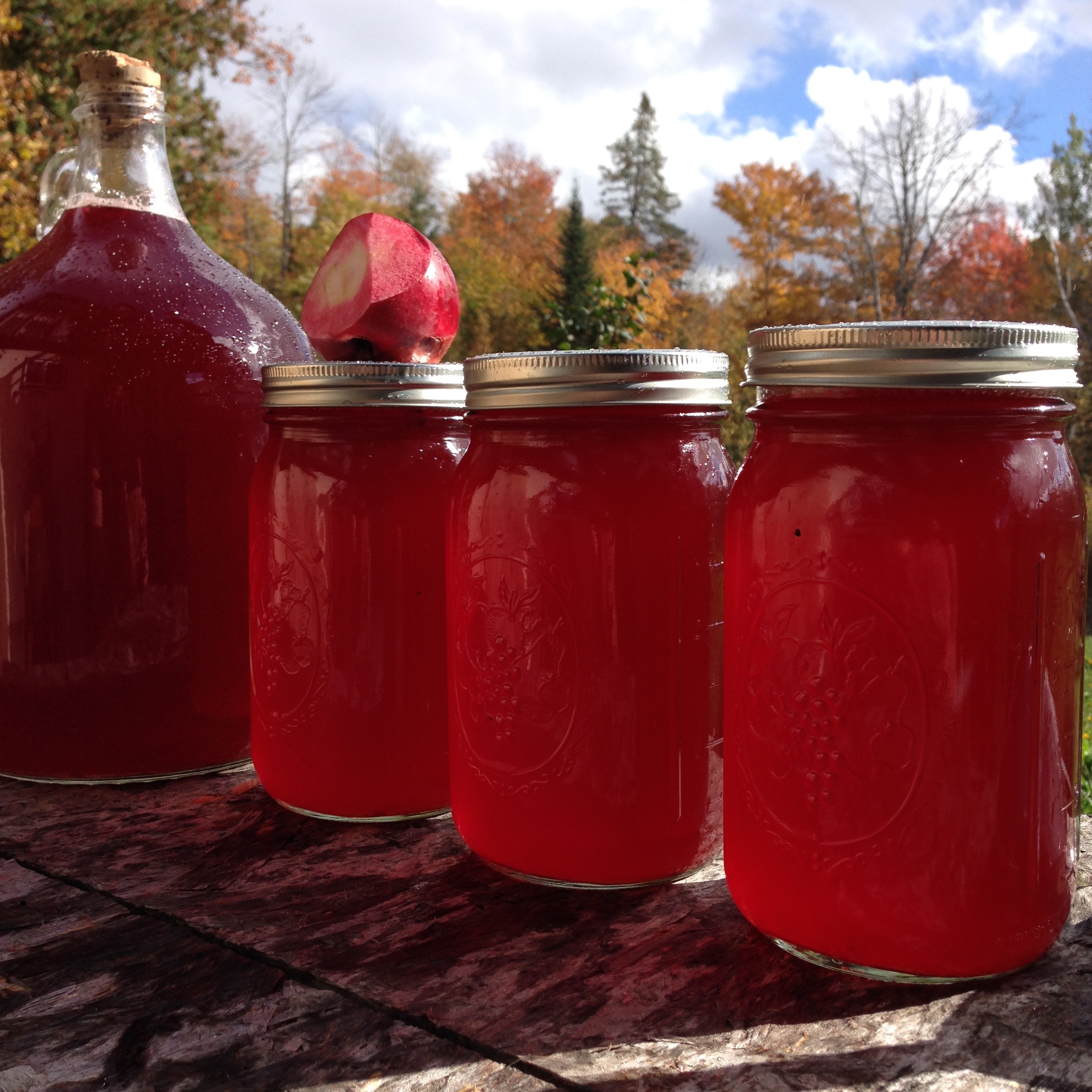At age 15, Frank Giglio fell in love with the fascinating world of food. Eager and intrigued, he began apprenticing directly under some of the top chefs in the US, which instilled a deep understanding of the creative process in working with food. He became a classically trained chef at the New England Culinary Institute in Montpelier, VT, and years later would go on to graduate from The Institute for Integrative Nutrition in NYC.
While Giglio’s culinary offerings are based in classic technique and traditional foods preparation, he has also been immersed in using food as medicine. Wearing his chef’s hat, he focuses on sustainable cuisine, seeking the highest quality foods grown locally and harvested in season, supporting the crucial farm to table method of preparing food. He remains deeply connected to the earth in his daily life, merging herbalism and living food nutrition with wild food foraging. Frank creates innovative dishes that are wholesome, full of vitality and have a very small ecological footprint.
Giglio's adventurous culinary offerings have been showcased throughout the health community as Frank is the featured chef for NY Times Best-Selling Dr. Alejandro Junger’s Clean Eats cookbook. Frank has catered weddings, special events, and weekend workshops across the country and regularly feeds guests at Daniel Vitalis and Arthur Haines primitive skills courses. Through his many ventures and projects, Frank Giglio is helping to bring the local and sustainable food movement to communities everywhere, making it extremely accessible and incredibly delicious!
Frank, along with his wife, Camille, runs Three Lily Farm, a culinary education and retreat center on 26 acres. Merging Frank's background in the culinary arts and inspiration from traditional diets, they are passionate about the quality of food that goes into their bodies and living sustainably with the land. For all of their cooking courses, dinners, workshops, and catering events, if the food isn't grown directly at Three Lily Farm, it's coming from a nearby organic farm.
In 2016, Three Lily Farm hopes to build first solar powered culinary education center on the land, which is abundant with fruit, herbs, gardens, and unique trees. Here House of Citrine had the opportunity for an exclusive interview with the chef from Three Lilly Farm:
1. What inspired you to become a chef?
I sort of fell into cooking at the age of 15. I wanted a car the following year so I found a job at a retirement home as a dishwasher. The food was subpar but the energy of the cook and their ability create meals really caught my attention.
After a year there I moved on to a fast-paced seafood restaurant in my hometown, where I would work during my junior and senior years of high school. It was at this restaurant where my love for cooking officially began.
In the two years working there, I made my way up from the breading room to prep cook, then eventually worked a variety of positions behind the line.
Although the work was demanding and my weekends and holidays were toast, I was drawn to the fast-paced nature of the kitchen and knew that cooking was a brewing passion I needed to pursue.
2. What inspires the creation of your dishes?
For me, the current season is what inspires me the most. On a daily basis, I look to the foods that are in season and available to me locally. This allows me to make the best use of ingredients that are at the peak of freshness.
Once I’ve selected my ingredients, I then look to their traditional uses and see how they were prepared. This knowledge usually can tell me how to potentially remove toxins, make each ingredient more digestible, and/or how to maximize the nutrition.
From there I just go with the flow. I love textures and will usually add a raw element to the dish. I will also add in a fermented food in some way or another. It may simply be a big scoop of kimchi over my roasted chicken or straining kefir and turning it into a spread.
3. What are some of your favorite ingredients to work with and why?
It really depends on the time of year. Because I eat so seasonally, I never really have the same ingredient around too long. That is, unless I preserved it in some way.
Although spring officially starts in March, we don’t really get any fresh food until late April or early May, but that’s when there is a great abundance of wild foods across the Maine landscape. During this time I’m eating tender dandelion greens, coltsfoot flowers, fresh nettles for homemade gnocchi, Japanese knotweed, and ramps (wild leek). Spring-dug parsnips add a sweet earthy taste to the fading stock in cold storage and overwintered spinach hits the markets from various local farms.
In the summer, I enjoy just about everything that comes into season. Beans for pickling, peas for pastas, greens aplenty, tomatoes, the list continues. Wild salmon is definitely one of my highlights of the summer. My time spent in Alaska created a deep appreciation for this beautiful and nutritious fish that needs a lot of love these days.
I love the addition of root vegetables in the fall, especially beets, possibly my favorite vegetable. They can be prepared in a variety of ways, from grated raw with herbs and vinegar to roasted tossed with goat cheese and toasted pecans. Acorn collections start in hopes to harvest at least 100 pounds or more to have enough to make it through the upcoming year. One of the most underutilized ingredients, acorns are a nutritious nut that have been traditionally used on most continents for thousands of years.
Winter is all about enjoying the bounty of the growing season. Fermented foods, pickles, mead, meat, frozen fruit and berries, and a variety of canned items add uniqueness to the rather monotony of winter ingredients.
4. Three Lily Farm encapsulates sustainability in its highest form. What advice would you like to share with others regarding this lifestyle?
It’s not easy! It’s completely glorifying to live close to the land, raising your own animals, and growing food, but it takes a lot of work. Living in a home that is completely off grid forces you to give up some of the daily conveniences that I used to take for granted. We can’t always shower, we don’t run a clothes dryer or keep all the lights on in the house. That being said, I don’t feel like we are being held back at all by the fact that our home is solar-powered. If anything, it puts me at an advantage over others who depend on the grid for power. When a storm comes, we don’t panic about potentially losing the power.
5. What does a typical day look like for you and your family?
I’m usually the first one out of bed in the morning, and depending on the time of year, that may be 5-6 am. I love getting up with the sun, or before it, as I find it’s the most inspiring and certainly the quietest time of the day for me. Once awake, I’ll do a little stretching, drink some coffee, and usually take the early morning to write, answer emails, or brainstorm projects.
By 8 am, I am usually out feeding the animals, which currently consist of 2 dogs, 2 pigs, 2 rabbits, and a handful of laying hens. Afterwards I’ll usually run the dogs up the road and loop back home through the woods.
Camille and Wilder are awake by now and breakfast gets going, which usually consists of smoothies for Camille and some sort of egg dish for Wilder and I.
Camille will spend the early morning working and switching back and forth with me hanging out with Wilder. Reading, painting, Lego creating, or out to the back yard are just a few of the daily activities.
During this time, I will start any lunch prep that’s needed, then head out into the garden or get to work on any new or existing projects on the land.
Around 1 pm we break for lunch, then carry on through the day as we can. With kids, the days are always changing, so I simply adapt to the day’s needs.
At some point during the afternoon Camille may break for a yoga session, I may get in a work out, or we may all take a hike to our favorite lookout point.
The remainder of the day is a bouncing back and forth between the computer and our current projects.
Dinner is usually around 6 pm, then it’s time for less lights around the house to save on our battery bank as we head into the evening. Whenever possible, I prefer to be in bed by 9 pm, although my 4 1/2 year old usually has other plans. :)
6. What are some of your favorite holistic products and why?
I gotta say, I’m a loyal fan of Living Libations. From their culinary oils to their Palo Santo Poetic Pits, every product I’ve tried has become a staple in my life. My top culinary oils are lemon, basil, and fennel, which go into my summer cocktails, smoothies, and butter mashups.
The SurThrival product line is another staple in my medicine cabinet. Thanks to good friend Daniel Vitalis, their founder, I have been a consistent chaga consumer since 2009. Their pine pollen in all its forms has been a real blessing during endurance sport training as well as daily life on the farm.
I’m also a big fan of the cod liver oil produced by Organic Pastures and Premier Research Labs D3 Serum.
7. Outside of sustainable food, Three Lily Farm seems to offer other services and products. Would you like to speak on those?
In the new year, we launched the Three Lily Farm Cookery Club. It’s a monthly membership site where we offer detailed recipes, monthly video calls, and access to my online courses. It’s a lot of fun!
During the summer months, Camille and I host an event called Back to the Land. It’s a 3-day retreat that focuses on traditional cooking and farming. It’s a sort of farm-to-table retreat where up to 16 participants spend the weekend together soaking in our spring-fed pond, sipping mead by the fire, and being inspired to cook and eat with the seasons.
We also offer catering, cooking classes, and a small product line made from ingredients purchased locally or harvested by us throughout the year. I’m currently working on a hot sauce, infused vinegars, spice blends, and a few herbal beauty products crafted by Camille.
8. What is one of your all-time favorite recipes?
It’s a simple dish, but I really love the pairing of wild blueberries and wild salmon. For about 2-3 weeks in July, I consume a lot of salmon. During this time there are 2 specific species of salmon that are available in fish markets throughout Maine. Sockeye and King salmon are both beautiful and highly nutritious fish. They are both fatty by nature which works perfectly with the sweet and slightly acidic blueberries which happen to cover the Maine landscape around this time.
Ideally, I’ll have a fire going outside, and I like this sort of primitive cooking technique where you make a plank out of wood, preferably cedar, and make a few spikes as well as slivers of wood. The spikes are pierced through the fish and into the plank. The fish is then cooked just a few feet from the hot coal bed and also takes on the flavor of the warm cedar.
The blueberries are hit with a touch of honey and apple cider vinegar, lightly mashed, and allowed to break down.
Once the salmon is about medium rare, I’ll take it to the table and spoon the blueberries right over the top. Simple, but so good!
9. What was the last meal you ate that you created?
Last night I pulled a pork butt (shoulder) from the freezer to thaw over night. It came from the pig I raised and processed myself. I placed it in a Le Creuset dutch oven along with a pint of my canned tomatoes, onions and garlic I grew, and dried crumbled kelp.
It went into a 325°F oven for about 6 hours and every so often I basted the pork with the tomato and juices until the meat flaked away. But then the tomato reduced and thickened up nicely.
I served it with roasted spaghetti squash, and buttery broccoli from the freezer. As usual, I enjoyed it with a variety of condiments from the root cellar.
10. What ingredients do you believe every person should have at their disposal?
First and foremost, Stocks and Broths are essential. These flavorful and nutritious liquids made from animal bones have so many uses and are so good for the body. Stocks and broths have been prepared for thousands of years and are essential for so many cuisines around the globe.
Making your own ensures the highest quality product without additional sweeteners, sodium, or other unnecessary ingredients that are often found in store-bought varieties.
Sea Salt
Our bodies need salt to live and food needs salt to enhance their natural flavors. From sweets to savory creations, a touch of salt really tightens the flavor of all you prepare. Unfortunately, most people cook with iodized salt, which is highly processed and absent of the other 90+ minerals that real sea salt possesses. I use solar dried sea salt from Maine.
Unpastuerized Apple Cider Vinegar
As I’ve made an effort to consume more locally-sourced products, I have done away with a lot of every day kitchen staples. Acids are an important part of cooking and balancing flavors and without access to lemons and limes, dishes would be missing that “pop”. In the past few years, I have been able to make my own apple cider vinegar as well as purchase it locally from Sewell Organic Orchard. I use it in everything from bone broth to vinaigrettes. The low pH makes it great for herbal extractions and general kitchen use.
Quality Butter
Whether added to your coffee or simmered into ghee, butter really does make everything taste better. I use butter in a variety of preparations and revere it as a sacred and nourishing food.
I stick to unsalted butter, which I source locally. Look for farms raising their cows on pasture during the summer and feeding them hay during the winter.
For delicious inspiration visit TheeLilyFarm.com and ChefFrankGiglio.com. Stay in touch with Frank and the Farm on Facebook, Twitter and Instagram.













